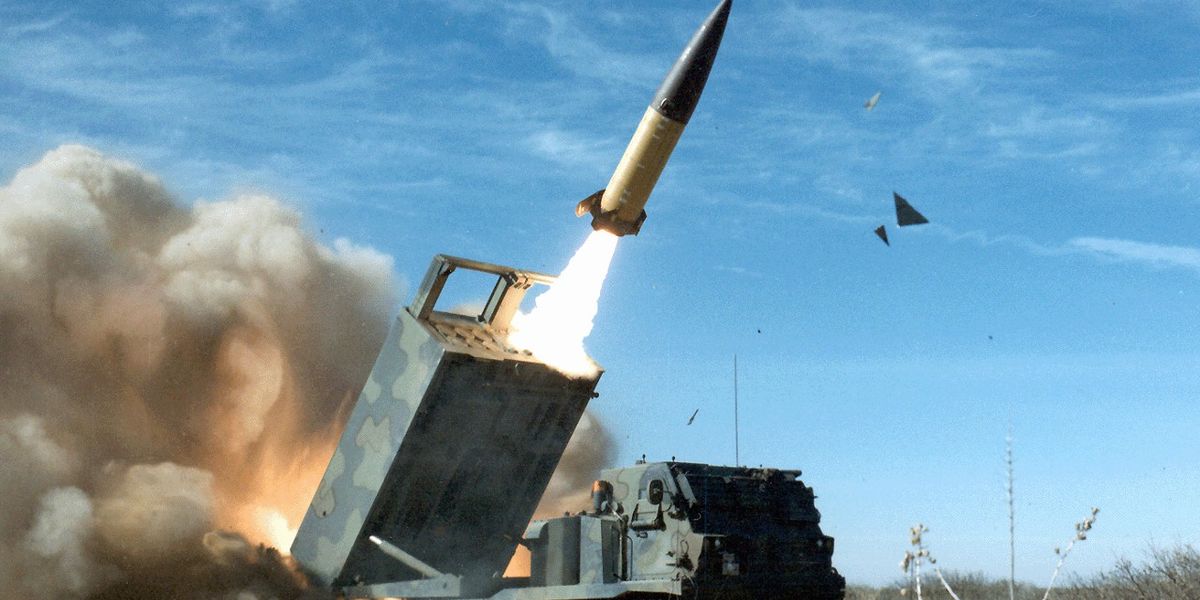The U.S. is poised to supply Ukraine with ATACMS missiles, according to an ABC News report on Saturday.
“They are coming,” an official said, adding that all plans concerning security assistance to Ukraine are subject to change. Army Tactical Missile Systems, or ATACMS, are “on the table” for a future aid package, a second official told ABC. ATACMS missiles — which boast a range 190 miles or 300 km — could help Ukrainian forces strike targets in Crimea, regarded by top Ukrainian officials and many Western observers as the Ukraine War’s decisive terrain.
The planned ATACMS transfer has not been corroborated by any officials willing to speak on the record. "There's no decision on ATACMS right now," said White House spokesman John Kirby, according to ABC News. "As the president has said, they're not off the table… we continue to discuss the viability of ATACMS,” he added.
The reported decision to send ACAMS missiles to Ukraine, if confirmed, would follow a longstanding Western pattern of initially refusing to supply Kyiv with certain high-profile weapons only to reverse course as the war drags on. Senior U.S. officials asserted in the opening weeks of the 2022 Russian invasion that there are no plans to send Patriot missile batteries to Ukraine. They noted that these systems would need to be operated on Ukrainian territory by American troops, thus making the U.S. an active participant in the conflict.
Meanwhile, as late as January 2023, Defense Secretary Lloyd Austin and Chairman of the Joint Chiefs of Staff Gen. Mark Milley reportedly opposed sending M1 Abrams tanks to Ukraine amid concerns that they don’t serve the Ukrainian military’s needs and are too complicated to operate, maintain, and repair.
The White House has since reversed its stance on both issues, supplying Kyiv with one Patriot system and approving the transfer of 31 M1A2 Abrams tanks.
The ongoing debate over deliveries of F-16 jet fighters is playing out in similar fashion. President Biden and top administration officials have repeatedly ruled out sending F-16s to Ukraine over the past 18months, echoing concerns about escalation if the jets are used to strike targets inside Russia. The White House announced in August that it will begin training Ukrainian pilots on F-16s later this year, a dramatic volte face that is intended to lay the groundwork for Ukraine to receive and operate F-16s provided by U.S. allies Denmark and the Netherlands.
Saturday’s report is the clearest indication yet that the provision of ATACMS could follow this well-established pattern of months of hesitancy or even outright refusal followed by a stark, sudden reversal. Not everyone thinks it’s a good idea.
“As the Biden administration grows more desperate to show progress in the war, it is running greater and greater risks in daring Moscow to retaliate against the West,” the Quincy Institute’s Director of Grand Strategy George Beebe said Saturday after the news. “The danger is that we will only discover where Russia’s red lines are drawn after we have crossed them.”
The West’s “boiling the frog” approach to Ukraine aid appears to be premised on a range of calculations concerning Russian behavior and the war’s underlying dynamics. Western policymakers reportedly share the concern that a sudden, drastic surge in aid, marshaling the full might of NATO’s arsenal into colossal aid packages announcing all available weapons within a short time span, could invite catastrophic escalation up to and including the use of nuclear weapons and a direct confrontation between Russia and NATO.
By spacing out deliveries of major weapons systems, the thinking goes, the West can slowly dilute Russia’s red lines and ramp up aid to Ukraine at minimal risk. Secondly, Ukraine’s armed forces (AFU) are limited in how much aid they can absorb by training, logistics, and maintenance requirements. Western governments can pledge everything at once, but it would still take years for the weapons to be delivered, deployed, and utilized in substantial quantities.
The ATACMS report follows closely on the heels of a surprise announcement by Ukrainian President Volodymyr Zelenskyy that Ukrainian forces have begun using domestically produced long-range missiles. Zelenskyy said the mystery missile was used to successfully strike a target as far as 700 kms away, with the secretary of Ukraine’s National Security and Defense Council, Oleksiy Danilov, noting that the new weapon boasts an even longer range.
No details concerning this unnamed missile have been independently confirmed, nor has its existence been verified. Whereas the weapons provided by Kyiv’s western backers come with prohibitions on strikes against targets inside Russian territory, the AFU can use missiles it manufactures without any such constraints. Ukrainian officials made no secret of their plans for this new weapon: “Believe me, already very soon someone [in Russia] will be burned, and burned in the direct sense of the word,” Danilov said, according to the Washington Post.
Though ATACMS possess roughly four times the range of the High Mobility Artillery Rocket Systems, or HIMARS, missiles being transferred by the U.S. to Ukraine, there is no evidence to suggest that they significantly outrange the Storm Shadow missiles pledged and supplied to Ukraine by the British and French earlier this summer.
Russian Foreign Ministry spokeswoman Maria Zakharova insisted in September 2022 that the provision of longer-range weapons to Kyiv is a “red line” that would make the U.S. “a party to the conflict.” Moscow’s response to such deliveries, threatened Russian Foreign Minister Sergey Lavrov, will be to capture more of Ukraine’s territory: “The further you supply weapons, the further we will move away from our territory the line beyond which [Ukraine can strike Russia],” he said.
Signals that the U.S. is inching closer to greenlighting the provision of ATACMS missiles may have been spurred by disappointing battlefield developments. As the main thrust of Ukraine’s much-anticipated summer counteroffensive in the southern Zaporizhzhia region continues to yield marginal gains at a “slower than expected” pace, Western planners and policymakers are already discussing upcoming Ukrainian offensives in 2024 and beyond.
Though neither platform can make it to Ukraine in time for the summer counteroffensive, some military observers believe that F-16s and ATACMS can play a key role in Ukraine’s future attempts to recapture Russian-occupied territory in the country’s south and southeast.
- Ukraine in NATO? War Inc. knows a great deal when it sees one ›
- Mission Creep? How the US role in Ukraine has slowly escalated ›
- Russian hawks push Putin to escalate as US crosses more ‘red lines’ - Responsible Statecraft ›
- US ATACMs in Ukraine gamble with future civilians' lives - Responsible Statecraft ›















